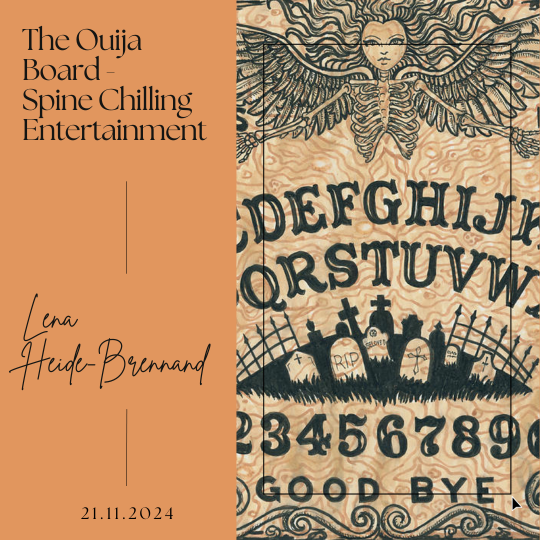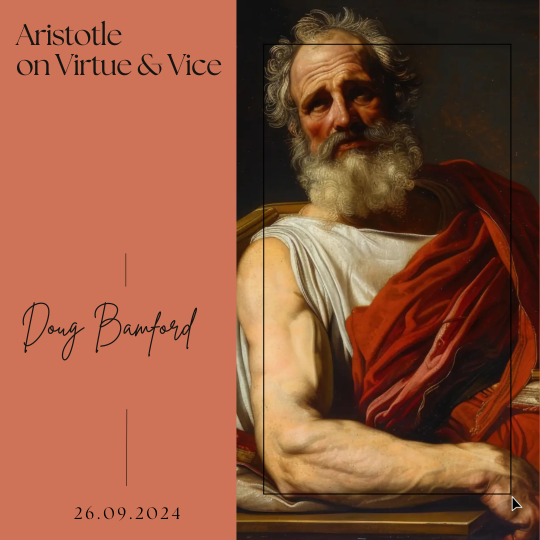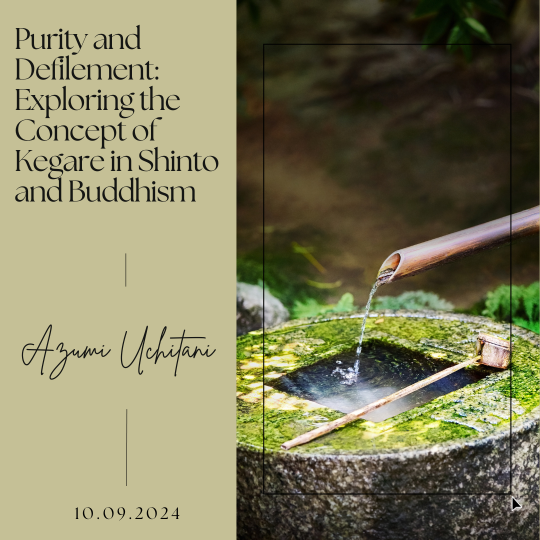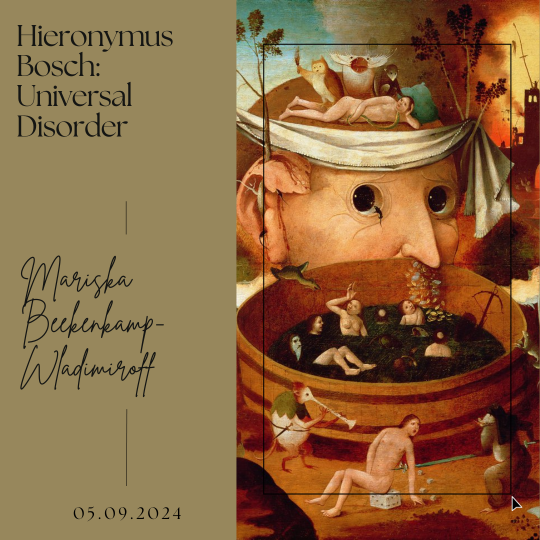The Resurgence of Spiritualist Art in Contemporary Culture
written by art historian & curator
Our day-to-day world is marked by unprecedented instability—rising conflicts, climate crises, and a relentless drive for material consumption. Many individuals feel disconnected from their inner selves and the natural world. The constant demand for more, coupled with the pressures of an accelerating digital age, has left people grappling with feelings of anxiety, isolation, and meaninglessness. Amid this backdrop, contemporary art has become a powerful medium for exploring themes of disconnection and reconnection. Spiritualist art, in particular, has resurfaced within the contemporary art scene as a counterforce to the chaos, offering a space where viewers can engage with deeper questions of existence, purpose, and healing.
Videos you may enjoy as well:
Spiritualist art fosters contemplation and transcendence, drawing from diverse spiritual traditions and metaphysical concepts. It has historical connections to movements like Symbolism, Surrealism, and Abstract Expressionism and we see how contemporary artists are revisiting these ideas. Today, most curators and writers recognize the historical value of spiritualist art while reinterpreting it in modern contexts. Spiritualist art creates a much-needed dialogue between the external world’s turmoil and the inner realms of self-discovery. This revival of spiritual art reflects the broader cultural shift toward seeking meaning and mindfulness in an era of uncertainty.
Reconnecting with Historical Roots
Spiritualist art has historically been left on the periphery of mainstream art for several reasons, primarily due to its association with the metaphysical, the mystical, and the intangible. Throughout much of art history, especially in the modern era, art movements that focused on realism, materiality, and social commentary were privileged, aligning with the rationalist, scientific worldview that dominated Western thought. Spiritualist art, by contrast, delved into abstract and often esoteric realms, exploring themes like the afterlife, cosmic consciousness, and non-physical levels of existence—subjects that did not fit neatly within the frameworks of traditional academic or avant-garde art. This marginalization was further compounded by a patriarchal art world that often relegated the spiritual and intuitive—especially when expressed by female artists—to a lesser status. As a result, spiritualist art was viewed as too personal, too mystical, or too abstract to be taken seriously by critics and institutions, remaining on the fringes until its recent resurgence.

Artists like Wassily Kandinsky, Klee, Miro, and Malevich, saw abstraction as a way to communicate otherworldly ideas. For these pioneers, art was a vehicle for exploring spiritual experiences and transcendent realms. Hilma af Klint, for example, painted what she referred to as ”spiritual messages” long before abstraction was widely accepted, attributing her work to guidance from spiritual entities. These early modernists viewed art as more than a visual expression—it was a metaphysical dialogue.
Contemporary artists are now revisiting these historical figures, seeing their works not merely as avant-garde experiments but as precursors to today’s spiritual art. The reevaluation of these artists—particularly af Klint, whose work remained largely obscure until recent retrospectives—has sparked a renewed interest in how art can connect with the unseen and intangible. This resurgence reflects a broader desire to bridge the gap between historical spiritualism and contemporary visual culture, showing that the quest for meaning through art transcends temporal boundaries.

A significant factor in the resurgence of spiritualist art is its alignment with the broader cultural trends of New Age philosophies, mindfulness practices, and the wellness movement. Over the past few decades, there has been a marked increase in the popularity of practices like meditation, yoga, astrology, and energy healing. These practices are rooted in ancient spiritual traditions but have found new life in the contemporary world, particularly as people seek alternative methods for self-care, healing, and personal growth. This growing interest in spiritual well-being has found its way into the art world, where many contemporary artists draw inspiration from these practices. Some integrate meditative or ritualistic elements into their work, creating immersive environments that promote introspection. Others explore themes like chakras, energy fields, or sacred geometry, using these symbols to evoke a sense of spiritual alignment and balance. The intersection of spirituality and wellness in contemporary art reflects a cultural shift toward holistic living, where emotional, physical, and spiritual health are interconnected.
Connected World(s)
At the heart of the rise of spiritualist art in contemporary culture is a profound reaction to the materialism that characterises much of modern life. In a world where consumerism dominates and where technology makes everything accessible at the click of a button, people are increasingly seeking experiences and ideas that go beyond the surface. This shift toward metaphysical themes is not simply about aesthetic beauty but about creating a space for contemplation and inner discovery. Spiritualist art evokes a sense of the mystical, of the magical or the sublime, offering viewers a reprieve from the everyday and inviting them to ponder the larger forces at play in their lives and the universe.

Leonora Carrington, a British-born Mexican surrealist artist, left a profound legacy in the realm of spiritual and mystical art. Throughout her career, Carrington’s work explored the intersections of mythology, alchemy, occultism, and the subconscious, creating a visual language that delved into the mystical dimensions of existence. Carrington’s painting ”The Giantess” (or The Guardian of the Egg), created in the 1940s, is one of her most iconic works, deeply imbued with mystical and magical themes. The painting draws from Carrington’s fascination with mythology, the feminine divine, and esoteric practices, which frequently appear in her work. The central figure depicts a towering, enigmatic female who has been interpreted as a goddess or earth mother figure, representing fertility, creation, and protection. The egg she holds is a key symbol in alchemy and mysticism, often linked to the idea of the cosmic egg, a source of life and transformation. This symbolism reflects Carrington’s belief in the cyclical nature of existence and the power of the feminine to shape and nurture life. Through this work, the artist bridges the visible and invisible worlds, embodying the magical and mystical themes that permeate her entire oeuvre.
Hilma af Klint, a Swedish artist and mystic, is widely recognized as one of the pioneers of abstract art, but her work was deeply rooted in spiritualism and mysticism. Af Klint’s paintings, many of which predate the abstract works of Kandinsky and Mondrian, were not just explorations of form and color but expressions of her profound engagement with spiritual dimensions. Her artistic journey was closely tied to her interest in Theosophy, Rosicrucianism, and other esoteric traditions, which emphasized the idea of a spiritual reality beyond the material world.
Af Klint believed that her art was guided by higher spiritual forces. She was part of a spiritualist group called The Five (a group of female artists and mediums), through whom she claimed to receive instructions from spirit guides. The guides, according to af Klint, directed her to create works that revealed deeper truths about existence, the cosmos, and humanity’s place within it. Many of her paintings were part of a series called The Paintings for the Temple, a body of work she believed would one day be housed in a spiral-shaped temple.
Her abstract, large-scale works are characterized by geometric shapes, vibrant colours, and organic forms, often infused with symbolic meaning. Circles, spirals, and crosses dominate her visual language, representing spiritual concepts such as unity, infinity, and the interconnection of all things. For instance, the series Primordial Chaos reflects her spiritual worldview that chaos gives rise to order, while other series, like The Ten Largest, explore the stages of human life from childhood to old age, symbolizing the cyclical nature of existence.
Hilma af Klint’s spiritual paintings were not meant for public consumption during her lifetime. She believed that the world was not yet ready to fully understand their spiritual significance and requested that her works not be exhibited until 20 years after her death. Her pioneering art was hidden for decades, only gaining recognition in recent years as a major influence in spiritual and modern art. Today, af Klint is celebrated as a visionary who created a new form of abstract art that was deeply intertwined with her belief in spiritual evolution and the invisible features of the world.

Chiara Fumai holds a significant place in contemporary spiritual art due to her radical exploration of mysticism, feminism, and the occult. Her work redefined how spiritual art can engage with themes of power, gender, and rebellion, making her a key figure in using mystical practices for political and social critique. Her performances and installations acted as rituals, using spiritualism to empower marginalized voices, making her a pivotal figure in bridging esotericism and feminist discourse in art.
One of Chiara Fumai‘s most celebrated works is ”The Witches of Italy” (2013). This performance piece, which was later presented in various forms, draws upon the historical and cultural narratives surrounding witches in Italy, specifically referencing the witch trials and the persecution of women accused of witchcraft. In this work, Fumai embodies a witch, channeling the voices and experiences of these marginalized women through storytelling and ritualistic performance. She utilized multimedia elements, including projections and sound, to create an immersive experience that highlighted the themes of female empowerment, the reclamation of narratives, and the connection between spirituality and resistance.
Whether through revisiting historical figures, embracing New Age and wellness practices, or responding to global crises, contemporary artists are turning to spiritual themes to navigate the complexities of modern existence. This growing movement not only enriches the art world but also offers a profound reflection on the human experience in the 21st century.





Leave a Reply